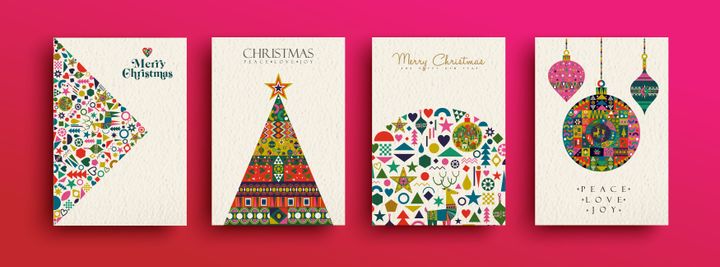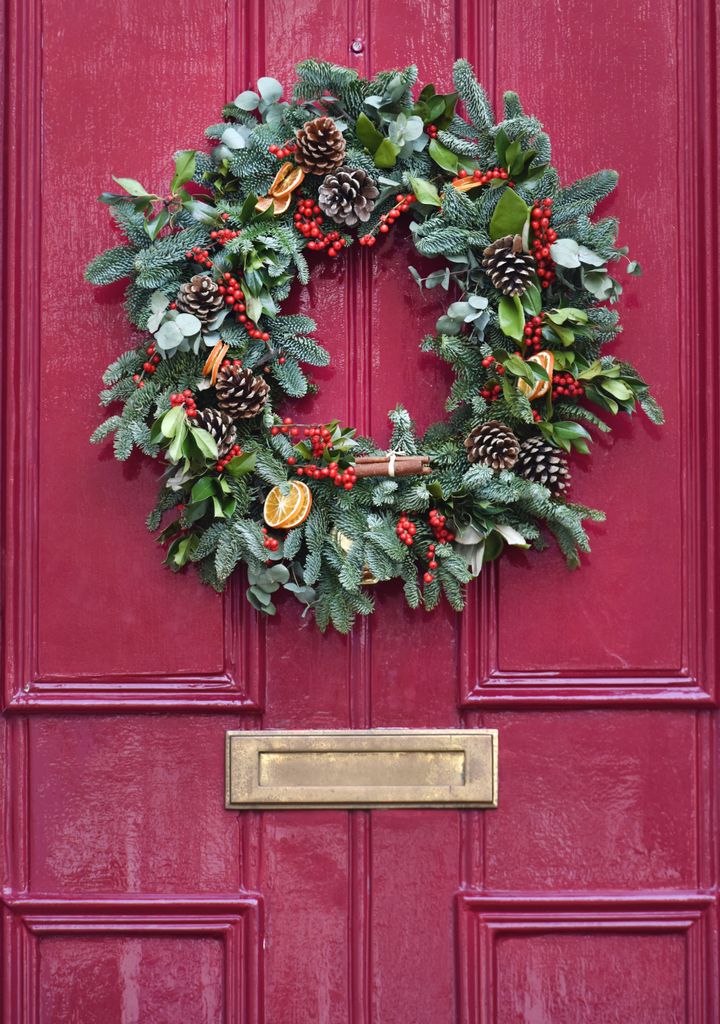
As a child, helping my grandparents display their Christmas cards was a highlight of the season. Friends, family, neighbours and people at church would send them festive greetings throughout December. We’d tack string across the room to cope with the annual influx, slotting cards on top to create makeshift bunting, and the string would sag low with the weight.
Last year, my nan’s former glistening grotto lost some of its sparkle. And even I – who used to get a fair few – only received half a dozen. Once a staple of the season, the tradition of sending and receiving Christmas cards appears to be dying out – particularly among younger generations.
“We are definitely seeing fewer Christmas cards being sold,” Dan Cooper, head Christmas buyer at John Lewis confirms, reassuring me it’s not just a reflection of my popularity. The reasons behind the drop in sales, he adds, are varied.
“The cost of postage has gone up, it perhaps isn’t as fashionable as it was to send cards, people don’t have as much time as they used to – and there’s an element of people not wanting to waste.”
Cooper has a point. Reports suggest one billion Christmas cards are sent to landfill each year in the UK, partly due to the fact shiny or glittery cards can’t be recycled. So it’s no wonder that in 2019 – when environmental concern is top of the agenda – consumers are cutting back.
But perhaps there’s more to it than just avoiding waste and not having the time to send cards. A colleague tells me he sent them for the first time in years in 2018. The reason? He’d gotten married that summer and finally had a record of where his friends lived from organising the invites.
Unlike my nan’s generation, few of us have a “house for life” anymore, so keeping track of each other’s addresses can be a nightmare, says Vicky Spratt, journalist and author of Tenants: Stories of Britain’s Housing Shame (out in 2020). “Millions of people are now private renters and one in three will be renting from cradle to grave – this is because a growing number are priced out of home ownership,” she tells HuffPost UK.
“Renting is unstable and it can mean moving often if a tenancy ends, flatmates move out or a landlord decides to sell up – so younger generations aren’t exactly logging all of their mates’ addresses in pocket address books like the one my nan has.”

So what do we do instead? We fire off a Christmas WhatsApp message or share a festive Instagram post and tag our pals. “You’re far more likely to do that than you are to send a card that may end up somewhere someone was living in 2018,” says Spratt.
Social media is definitely a factor that influences how we utilise Christmas cards, says Amanda Fergusson, CEO of the Greeting Card Association. We see updates from distant friends every day, so there’s no need for the traditional round robin our grandparents sent. But, she adds, that’s not to say the festive card tradition is dying out completely – we’re still sending them to our nearest and dearest.
Research from the association suggests the per capita spend on greetings cards is still higher in the UK than anywhere else in the world – with the industry bringing in £1.7 billion each year. “We’re seeing a decline in the volume of Christmas cards being bought, but what we’re seeing is people spending more on individual cards for close family and friends,” explains Fergusson.
In 2012, the retail value of single (non-multipack) Christmas card sales was £122.5 million in the UK. That number shot up to more than £184.4 million in 2018.
Perhaps with more unique greetings cards on sale – many carrying funny pop culture references, in shops like Scribbler – you’re more likely to pick up one suited to a specific friend or family member, than you are to get them a standard card with a Christmas tree that wishes general seasons greetings.
And this will be welcome news to your card recipients, as Royal Mail research showed an overwhelming 72% of people would like to receive cards at Christmas, with only 6% saying they’d prefer a festive greeting via social media and 10% who’d prefer it via text. Most respondents said they’d appreciate the effort the sender went to and would feel that someone really cared.

Eco-awareness could have influenced the move towards fewer, better quality cards, but Fergusson believes the shift is instead part of a wider trend within the industry. “What we’re seeing across all card sales is what we call non-occasion cards,” she says. “People are sending cards just to say ‘hi’ or ‘thinking of you’ or to share a funny joke with a friend, in a way that’s never happened before.”
Market research suggests sales of non-occasion cards are being driven by consumers aged 18 to 34, she adds, and people in this age group are sending more cards overall per year than they were a generation ago. It’s not entirely clear why this is happening, but Fergusson hypothesises it could actually be because of social media.
“Because they’re online all the time, if they want to say something special to someone they really care about, they have to make an effort,” she says. ”Sending a handwritten card to tell someone ‘I miss you’ is a far more powerful connection that we have on social media.”
Either way, it seems the tradition of sending cards isn’t dying out after all – we’re just getting better at doing it meaningfully. And as for me, I won’t be buying a multipack this year – but I’ll be sure to pick out a special card for my nan.